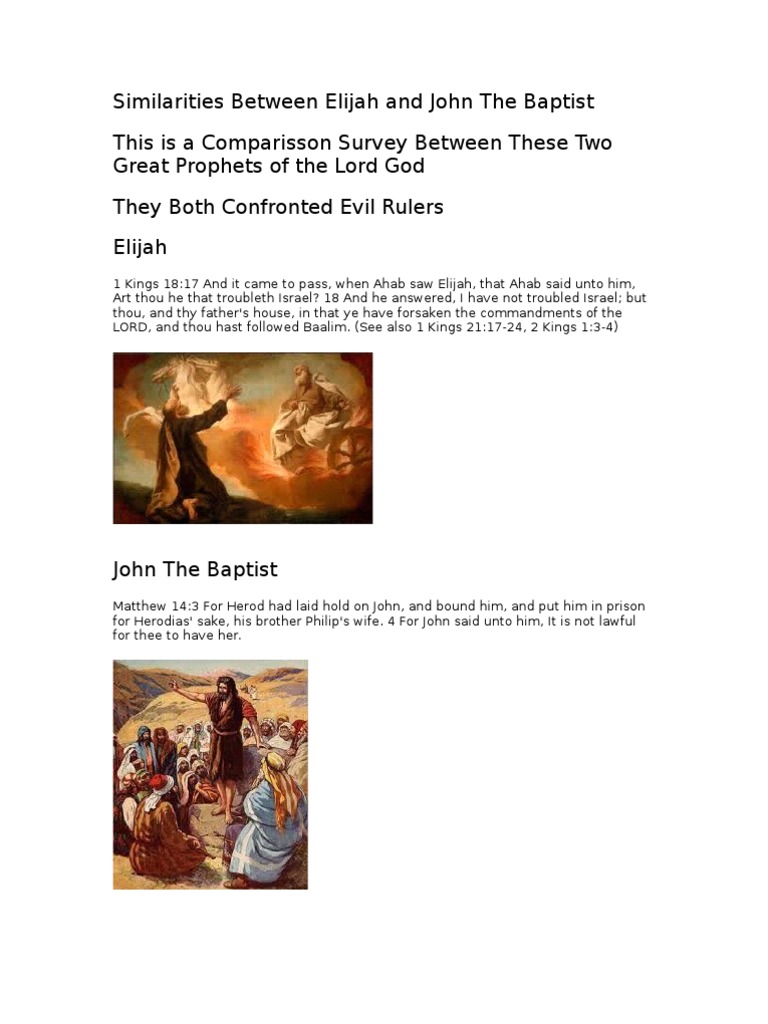In the intricate tapestry of religious history, the prophetic figures of John the Baptist and the Báb stand as compelling harbingers of divine revelation. This exploration unearths the profound parallels between these two pivotal figures, illustrating how their lives, messages, and ministries resonate across time and context. Both serve as forerunners to monumental religious transformations, establishing them as key agents in the unfolding narrative of God’s guidance to humanity.
The Role of the Forerunner
John the Baptist emerges in the New Testament as a precursor to Jesus Christ, heralding the advent of a spiritual renaissance. His ascetic lifestyle, profound teachings, and the act of baptism symbolize a cleansing of the spirit, preparing the hearts of the people for the coming Messiah. The Báb, similarly, emerges in the 19th century as the herald of Bahá’u’lláh—the founder of the Bahá’í Faith. By proclaiming the imminent appearance of a new Messenger of God, the Báb paved the way for a significant religious evolution. Both figures serve as catalysts for spiritual awakening, their calls resonating with the urgency of their message.
Prophetic Mantle and Divine Mandate
The mantle of prophecy rests heavily on both John and the Báb, each possessing distinct yet convergent mandates. John, known as the voice crying out in the wilderness, draws attention to spiritual readiness, emphasizing repentance and the transformative nature of faith. His encounter with the divine is tangible—immersing followers in water to signify rebirth. Conversely, the Báb’s mandate was revolutionary, seeking to dismantle the stagnant structures of religious dogma that prevailed in his time. His declarations not only sought to purify the faith of followers but also to shake the very foundations of societal norms, establishing the necessity of a new divine covenant.
Symbolism and Sacramental Imagery
Both figures employ vivid symbolism that transcends mere narrative. For John, water serves as a potent metaphor for spiritual renewal, embodying the concept of purification. Such imagery resonates as he baptized individuals in the Jordan River, symbolically cleansing them from sin. The Báb, in his discourses, uses the metaphor of the “Dawn Breaker,” a symbol of the new day and enlightenment that his coming heralds. This metaphor encapsulates the essence of his teachings, illuminating the path to a new understanding of God’s will. Through these symbols, both evoke a sense of urgency and deeper spiritual awareness.
Challenges and Persecution
The lives of both John and the Báb are marked by profound challenges and persecution, illustrating the inherent struggle between spiritual truth and societal acceptance. John faced the wrath of Herod, culminating in his martyrdom—a sacrifice that underscores the perilous nature of truth-telling. Similarly, the Báb endured severe opposition from the authorities of his time, ultimately leading to his execution. Their stories serve not only as historical accounts but also as emblematic narratives of the trials faced by those who stand as beacons of truth in a world often resistant to change.
Legacy and Influence
The legacies of John the Baptist and the Báb extend far beyond their mortal lives. John’s influence permeates Christian thought, embedding the significance of repentance and baptism into the heart of spiritual practice. His role as a forerunner is celebrated in liturgical practices and theological discourses alike. Similarly, the Báb’s impact on the Bahá’í community is monumental, laying the groundwork for the acceptance and recognition of Bahá’u’lláh as the fulfillment of divine prophecies. The intertwining of their narratives invites reflection on how the seeds sown by one generation of prophets can blossom into transformative movements for subsequent generations.
The Intersection of Faith and Reason
Both figures promote a harmonious relationship between faith and reason, challenging adherents to engage with their beliefs on a deeper level. John the Baptist urges followers to transcend ritual and embody the spirit of transformation—an invitation to introspection and personal accountability. The Báb, in his teachings, championed the pursuit of knowledge, urging his followers to reconcile religious beliefs with rational inquiry. This focus is particularly salient in the modern era, where the quest for understanding and truth remains central to the spiritual journeys of many.
Conclusion: A Tapestry of Spiritual Awakening
The parallels between John the Baptist and the Báb illuminate the enduring nature of prophetic voices across the ages. Their lives exemplify the universal themes of preparation, sacrifice, and the call for spiritual transformation. Each acts as a divine herald, awakening the human spirit to the potential of renewal and revolution. As contemporary seekers of truth reflect on these figures, they may find in their stories a compelling invitation—to embrace the challenges of spiritual growth, engage with the complexities of faith, and acknowledge the profound interconnectedness of divine revelation throughout history. Thus, while separated by time and circumstance, John the Baptist and the Báb embody a shared legacy of awakening, resonating with seekers of truth across the epochs of humanity.
